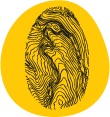
Monitoring urban changes across a century in the Romanian Carpathians using landscape metrics
Urban expansion didn’t follow a utopian conformation to the territorial regulations and systematisations, but was achieved spontaneously, according to the socio-economic vectors. This type of spatio-temporal development reflects in a fragmented morphology (Frankhauser, 1994) that can be monitored through landscape metrics (Pătru-Stupariu et al., 2011).
This paper sought to evaluate landscape changes in the case of Sinaia town which is representative for the mountainous urban settlement typology in Romania. We selected FRAGSTATS software (McGarigal et al., 2002) version 3.3 to compute the landscape metrics. To evaluate changes in the land use pattern we used three metrics (CONTAG, AGREG, SPLIT), depending on their usefulness in urban planning (Botequilha-Leitão et al., 2006) and were computed for the entire landscape. The territory was divided in 12 homogenous urban patches that represent uniform structures of land use types (Herold et al., 2002). Boundaries between patches were established on streets and plots` edges. The grid’s cell size is 0.5m at the analysis scale of 1:5,000 which allows a correct identification of relations between urban landscape elements (plots, plots` edges, buildings, streets, green areas and vacant land).
Landscape metrics` values were compared between t1 (year 1907) when a large share of Sinaia’s urban tissue was configured, being considered a model of equilibrium between the urban components, and t2, year 2009. In terms of dynamics within landscape composition and configuration, we found that between 1907 and 2009 there is a tendency of amplifying the diversity and fragmentation of the entire landscape (aspect expressed by all three landscape metrics). Urban landscape patches tend to acquire similar features by reducing the green areas and extending the monopole of built-up surfaces. The extending fragmentation is also marked by intercalated land functions and the insertion of untypical buildings for the initial patches.
Landscape structure was characterised based on four features: diversity, fragmentation, aggregation and complexity. The metrics emphasised the diminished landscape connectivity, determined by the increase in patch number (from 58 in t1-1907 to 878 in t2-2009). CONTAG metric helped illustrating the landscape change trajectory towards fragmentation. Thus, when meadows were the dominant element (over 50% of land use in moment t1) the values of this metric were high in comparison to the subsequent moment t2 when there is a diversity of land uses (leisure, residential, industrial and commercial). Building restrictions in neighbourhoods that are located on the slopes of Bucegi Mountains relate to land slides and soil erosion and are reflected in the reduced landscape fragmentation. This is due to the delayed insertion of single-family housing structures. On the other hand, neighbourhoods that have traditionally polarised this type of buildings and pavilion housing during communism are characterized by lower values of landscape aggregation.
Applying these metrics we obtained synthetic data on the landscape composition and configuration that was confronted with ancillary data and provided tools of monitoring the spatial heterogeneity and the related intrinsic processes of the urban landscape.
Botequilha Leitão, A., Miller, J., Ahern, J., McGarigal, K., (2006) Measuring landscapes, Island Press, Washington;
Frankhauser, P., (1994) La fractalité des structures urbaines, Anthropos, Paris;
Herold, M., Scepan, J., Clark, K.C., (2002) The use of remote sensing and landscape metrics to describe structures and changes in urban land uses, Environment and Planning A, 34, pp. 1443-1458;
McGarigal, K., Cushman, S.A., Neel, M.C., Ene, E., (2002) FRAGSTATS v3: Spatial Pattern Analysis Program for Categorical Maps. Computer software program produced by the authors at the University of Massachusetts, Amherst, online [http://www.umass.edu/landeco/research/fragstats/fragstats.html];
Pătru-Stupariu, I., Stupariu, M.S., Huzui, A., (2011) Application of landscape metrics to asses the interaction between nature parks and their urban surroundings. Case study: the Bucegi Nature Park-Sinaia city fringe, 48th IFLA World Congress, „From Urban Landscapes to Alpine Gardens”, Zurich, 27-29 June.
